The History of Motown
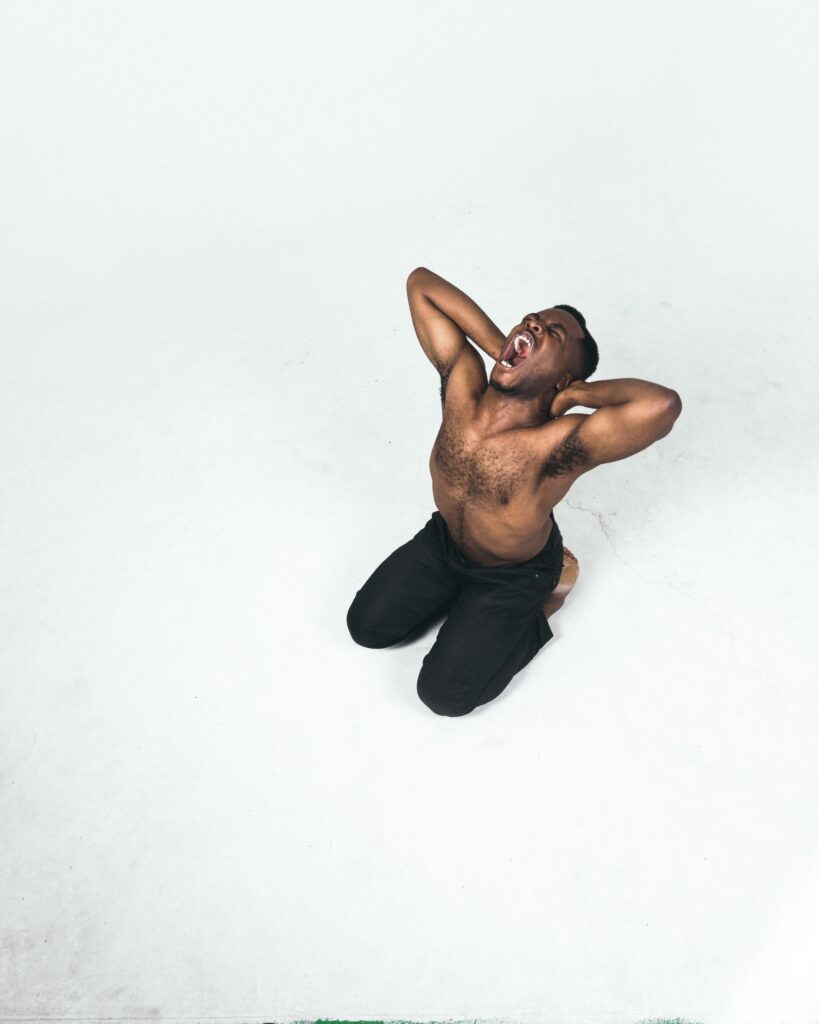
By: Sydnee Walcott During the 1960s there were political changes that were enacted during the Civil Rights Movement. Approaching the end of segregation, the rise of the Black Power Movement emerged and people began to notice many Black figures become more prominent within the entertainment industry. These efforts were recognized through a record label that would make history in breaking free from racial barriers. When it comes to recognizing Black intelligence, individuals like Berry Gordy Jr. inspire the public that there are many opportunities for artists to put forth their unique talent. He demonstrates an independent and self-reliant attitude when achieving goals that contribute to the success of Motown, a record label that brought many Black artists together. He also teaches young artists to take risks and follow their desire to create meaningful content that can change peoples lives. On January 12, 1959, Motown was founded in Detroit, Michigan, by Berry Gordy Jr., a former boxer and automobile worker, with the help of an $800 loan from his family. These careers provided him with the skillset to enact perseverance, patience, and a mastery of applying vast knowledge to fix various cars and defending himself that helped him keep up with the fundamentals of running an independent record label. The record label’s name was initially Tamla Records before it was changed to Detroit’s nickname “The Motor City.” Before Motown’s founding, Gordy was a R&B and soul songwriter who wrote songs for local acts in Detroit such as Jackie Wilson and the Matadors. Although Wilson’s single, “Lonely Teardrops,” achieved huge success, Gordy felt he was not compensated fairly compared to his other singles that he wrote for Wilson. Gordy realized that he could generate the wealth he wanted by producing records and owning the royalties for it. His passion for owning an independent record label was due to feeling limited in his writing capabilities and the talent he put forth signing with other artists. Gordy had a desire for breaking norms and setting the bar high when it came to producing quality content in the music industry. When Billy Davis and Gordy’s sisters, Gwen and Anna, created Anna Records, they wanted Gordy to be the company’s president. Berry declined the offer because he wanted to have an independent record label that he could own. This led to the birth of Motown Records. The Matadors, who became The Miracles, became the first act to sign to the record label with their lead singer, Smokey Robinson, becoming the label’s vice-president. During the same year of Motown’s founding, Berry purchased property on Detroit’s Grand Boulevard which would eventually become Motown’s original headquarters — “Hitsville U.S.A.” The label achieved rapid success with the release of its first hit “Money (That’s All I Want)” performed by Barrett Strong. In 1960, the release of The Miracles’s single, “Shop Around,” became the label’s first record to sell over a million copies to a wide audience. The following year, “Please Mr. Postman” by The Marvelettes would become the label’s first number one song, and their success continued to grow ever since. Throughout the 1960s and 70s, Motown Records was recognized all over the map including a variety of top-charting hits from artists and groups like: Smokey Robinson and The Miracles, The Temptations, Diana Ross and The Supremes, The Jackson Five, Marvin Gaye, Stevie Wonder, The Isley Brothers, and Gladys Knight and The Pips. The early 1970s saw changes for Motown when Gordy departed from Detroit and decided to relocate the label’s headquarters to Los Angeles, California, in 1972. Shortly after moving to Los Angeles, Gordy would dabble in the film and television industry with the founding of MoWest Records before becoming defunct in 1973. By 1975, many artists and groups had departed from the label, but Motown still continued to achieve success throughout the late 70s into the 80s with acts such as Lionel Richie and The Commodores, Rick James, Teena Marie and DeBarge. In June of 1988, Gordy sold his ownership of Motown Records to Music Corporation of America (MCA) and Boston Ventures for $61 million. This decision led to the label losing profit in the mid-1980s. Throughout the 1990s, they continued to include successful acts such as Boyz II Men, New Edition member Johnny Gill, 702, Brian McKnight and Erykah Badu. In December of 1998, Motown was folded into the Universal Music Group, and in 2005, merged with the label to establish the Universal Records Group where it continues to uphold a distinct legacy as a strong force in the music industry. This umbrella division of Universal Music oversees the catalogs for labels like Motown, Universal, Background, Republic, Cash Money, and Casablanca. During a period where significant changes were taking place such as the end of racial segregation and the emergence of Black pride, Motown Records stood out in the forefront to help break down racial barriers during the time and attract a diverse audience of music lovers. Motown’s legacy does not solely consist of being an opportunity for many Black artists to engage in. The label has established a political legacy for itself by bringing awareness to issues that occurred during the height of its popularity. This legacy inspires many Black artists and content creators to strive for new heights when it comes to musical entrepreneurship.
Popular Fashion Started by Black People
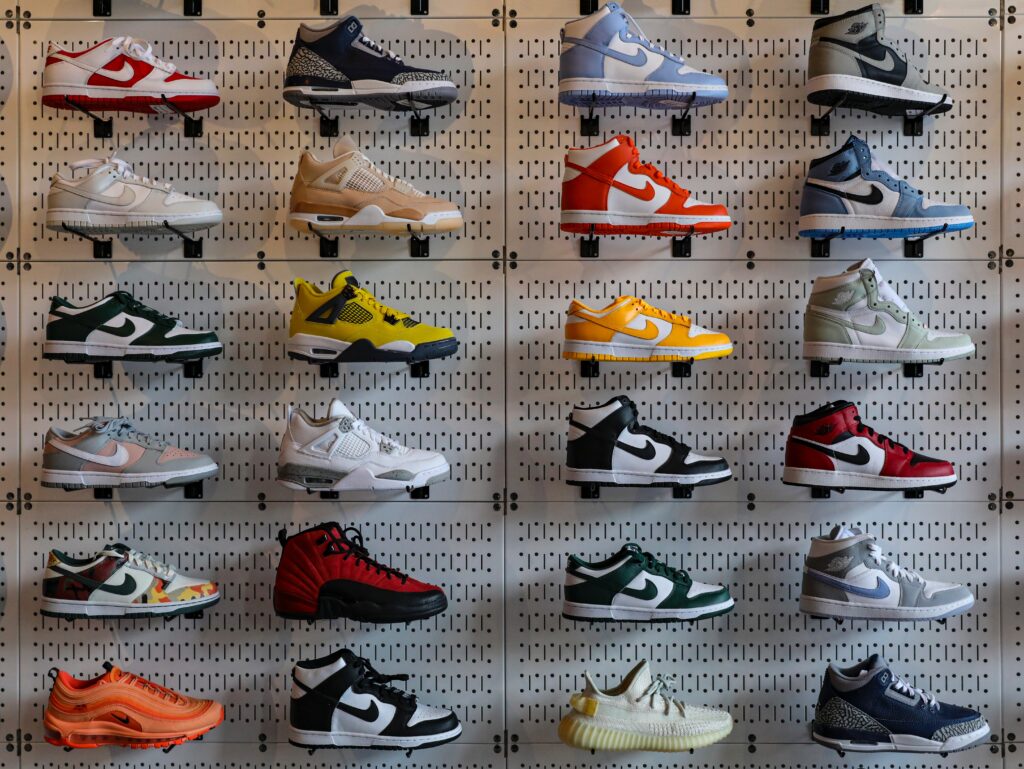
By: Sydnee Walcott Black culture is not only embedded in the performing arts scene, but in the fashion scene as well. Historically, Black culture has inspired some of the most groundbreaking fashion trends that transcend to future generations. Unfortunately, Black people continuously face challenges when achieving recognition for their creativity in the fashion industry. The dynamic between the fashion industry and Black culture has always been a challenging relationship. Over the years, popular fashion trends created by Black people have been appropriated and whitewashed by reputable fashion brands. Celebrities often fail to give Black people the recognition that they deserve as they continue to profit off of their designs. A majority of popular clothing, jewelry, nail art, and hairstyle trends include cultural designs and aesthetics from the Black community. Outlined are some of the most popular fashion trends that originated from the culture: The baggy pants trend has a political undertone that resists the status quo, with the style stemming from the loose fitted pants prisoners wore in jail cells. The style would be elevated in the 90s with female celebrities like Aaliyah giving the baggy look a feminine yet edgy touch. Besides rocking her signature hairstyle, the late singer was often seen wearing a tight-fitted shirt known as a crop top with a pair of baggy jeans. Although Aaliyah is known for trending this style, she was not the only artist who brought this style to life during the 90s. The girl group TLC also brought this style to the forefront as members were often actively seen supporting the girly-tomboy style. Although Aaliyah passed away over 20 years ago, she continues to leave a mark on the fashion industry with this popular fashion trend that everyone wants to follow. During the 2000s, sneaker culture has become desired, but its history dates back to the 1960s with the help of Black basketball players who proved that sneakers do not solely have a purpose for the courts. In the 1970s, shoe companies like Puma and Nike recognized how popular sneakers were becoming within the Black community, and wanted to contribute to its commercialization. It was not until the 1980s when sneaker culture would take off as a popular trend with the release of the Air Jordan sneakers by the retired basketball champion himself, Michael Jordan. By the start of the 2000s, sneaker culture had achieved popularity in almost every part of the world and saw no sign of reverting back to traditional sneaker trends. Cornrows, laid edges, weaves, and wigs are protective styles that have been a part of Black culture for many centuries. Not only do these styles help with achieving and maintaining healthy hair, but they also play a significant role in representing Black culture. From the 1960s and 70s, there was a resurgence in these styles. Many Black people began to embrace their heritage during the Black Power Movement. Unfortunately, while Black girls and women have faced criticism for being labelled as “ghetto” for wearing hairstyles that represent their culture, White and Non-Black women are described as “edgy” for wearing hairstyles affiliated with Black culture. White women are providing a positive connotation to these traditional hairstyles while Black women are subjected to discrimination for embracing their identity. This is not to say that Non-Black people cannot wear these hairstyles, however, appropriating them and choosing to not give Black people well-deserved recognition for these styles is unfair and discriminatory. Nail aesthetics date back to Ancient Egypt with royals like Cleopatra and Queen Nefertiti engaging in painting their fingernails and toenails red — a colour that represents a symbol of courage. Florence Griffith-Joyner, a three-time record breaking Olympic track and field athlete, is known to have brought this trend to the modern era during the 1988 Olympics. Not only was her talent as an athlete recognized, but her long acrylic nails were viewed as unique and intriguing. In the 1990s, Black women continued to popularize acrylic nails during the rise of Hip-Hop and R&B culture. The pierced nail look, which involved a piercing of the tip of a nail where a small ring can be added, became popular during this decade with the help of Janet Jackson marketing the look. Today, long acrylic nails are still a common trend with celebrities like Rihanna, Nicki Minaj, and Cardi B continuing to support the long acrylic look. Without Black culture, a lot of popular fashion trends would not have been recognized. So it is important to give Black people credit for their innovative and creative styles, as they helped transform the fashion industry to focus on uniqueness.
Moments Where Musicians Shut Down Racist Moments

By: Sydnee Walcott Celebrities are people with large platforms. They entertain their viewers through various creative mediums such as acting, music, and comedic acts. However, there are some artists who do more than entertain their audiences. It is not uncommon for celebrities to use their platforms to bring awareness to social issues. There have been key moments where celebrities have confronted racism, cultural appropriation, sexism, colourism, and disrespect. Musicians and artists tend to be some of the most vocal celebrities when it comes to taking a stand against something wrong. While musicians are widely known for entertaining their fans through their songs and onstage presence, there have been moments when they were not afraid to speak their mind and provide their insight on controversial topics. Black people have left an influential impact on the music industry yet continuously endure mistreatment within the industry. During interviews, there were musicians who were not afraid to stand up against racism in the industry. They further made efforts to call out interviewers for making insensitive remarks. Happy Mag created a video on some of the most notable moments where musicians have called out racism. Outlined is a breakdown of four moments featured in the video: Aside from her talent as a singer, Grace Jones is known for having a very bold and eccentric style with an extroverted personality. Some have stated that her iconic style inspired younger musicians to express themselves in the music scene. In an infamous 1980 interview with Television Presenter Russell Harty, Jones was a victim of disrespect from Harty throughout the interview. If Harty was not speaking to Jones with his back turned to her, he would make insulting comments about Jones’ outfit and sarcastically ask whether she ”calmed herself down,” given her eccentric style. She responded to the question by saying she is overestimated and told Harty to “try her.” Jones’ response reminds people why she is deserving of her celebrity status. However, there was a moment where she got violent and slapped Harty when she became exhausted from the excessive ridicule. In 1981, when MTV launched it was recognized for being one of the first channels to be completely dedicated to music. However, they garnered a negative reputation for their lack of diversity during this time. People noticed that Black artists were receiving little airplay for their music videos. MTV executives have denied these allegations and stated that it was not because of racism. They further argued that many Black artists did not fit the channel’s rock theme. The channel became more inclusive after the airing of Michael Jackson’s “Billie Jean,” but this feature was approved at a cost. CBS President Walter Yetnikoff threatened to have the record’s White artists pulled from MTV’s roster unless they played Jackson’s video. Yetnikoof was not the only notable person to address MTV’s lack of diversity. During an interview with the channel in 1983, David Bowie, who made a legendary title for himself as a pop star and fashion icon, called out the channel’s exclusion of Black artists and gave them credit on how they have transformed the music industry While Bowie was able to benefit from White privilege, he demonstrated exemplary humanitarian traits when using his privilege in a positive light. The first thought that comes to mind when people think of Whitney Houston are her groundbreaking vocals. Houston is well known for being an outspoken person who could be real with her audience. During a 1998 interview with CBC, Houston was labelled as “angry” by the interviewer, Laurie Brown. That was not the only insensitive comment during the interview. Brown also asked Houston if she felt as if she pursued the wrong business. Houston responded by saying she did not pursue the wrong business, but notes that she has dealt with the wrong people in the industry. “You sing them underneath the floor,” was one of Houston’s responses and mottos to Brown’s follow-up question on how she copes with dealing with the wrong people. Tupac Shakur is a rapper who is outspoken on injustices and social issues whether it is expressed through songs or during an interview. In a 1994 interview with MTV, Shakur was asked about how Hip-Hop transformed from being a genre that addressed social issues to a genre with an “I don’t care” type of lyricism. Shakur stated that things have not changed entirely and pointed out how there is only so much mistreatment one can handle before they get pushed over the edge. These four artists and their responses to racist comments are some of the most memorable and remind their audiences why these influential figures are reputable.
Black People Who Revolutionalized The Hair Industry
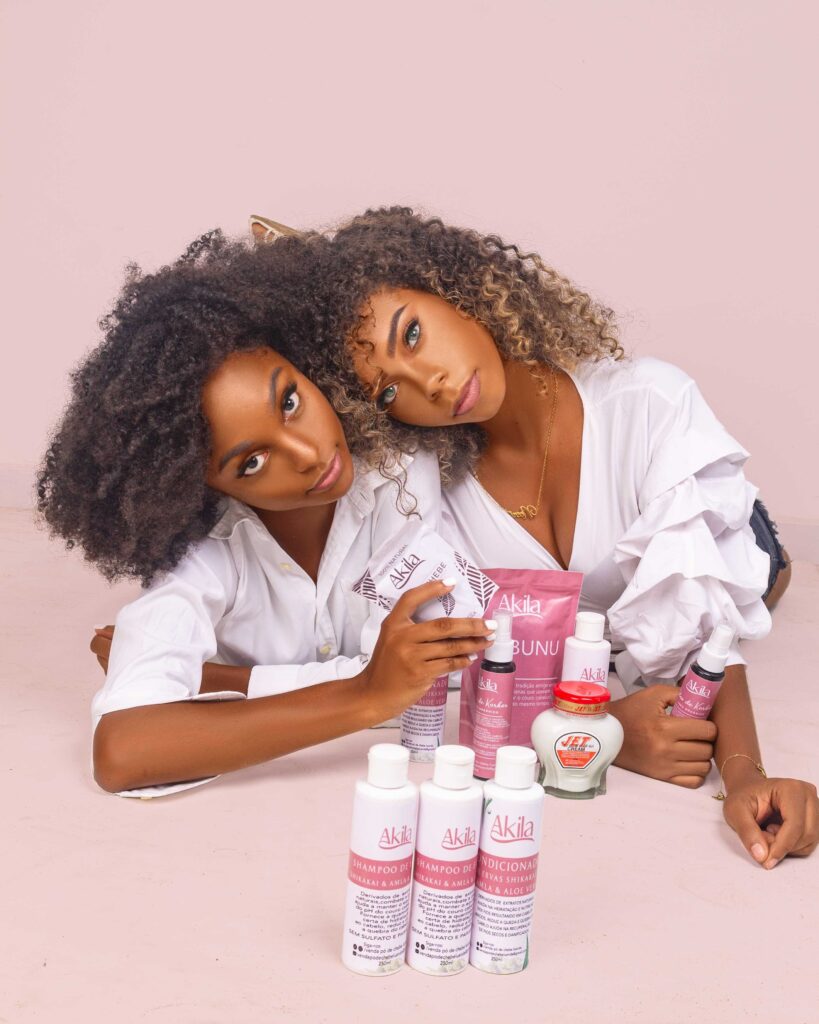
By: Sydnee Walcott Blacks Who Revolutionized The Hair Industry By: Sydnee Walcott For women of colour, hair is a form of expression that encompasses their identity and culture for centuries. Different hairstyles such as cornrows, single braids, dreadlocks, and afros help with presenting who Black people are and the pride they have towards their natural beauty. Hair care has unfortunately been an issue for Black people as many often struggle with finding the right products that improve hair growth and hair health. These issues became prevalent during the slavery and Jim Crow era. However, as Black women were innovating new ideas that would provide advanced hair care for Black people, these women helped revolutionize the hair industry. Outlined is a list of some of the most renowned Black inventors who transformed the hair industry for the better: Annie Malone Not only was she one of the first African Americans to become a millionaire, but Annie Malone has also made history by becoming the first woman in America to become a self-made millionaire. Malone had a passion for chemistry from the time she was a child. Her love for chemistry would then lead her to become one of the first African Americans to transform the hair care industry for Black women. Many women were experiencing hair loss by using harmful methods to straighten their hair. Malone invented products that provided women with healthy straight hair without the added damage from heat. The product was called “Wonderful Hair Grower,” and the growth stimulant attracted many customers on the market. When Malone began to hire and train salespeople, her products would receive mass distribution through America, South America, Africa, and the Caribbean. When transitioning over to cosmetics, Malone named her brand “Poro,” and continued to sell both hair care and cosmetics. Poro continued to receive success and led to the opening of Poro College where Black women would be able to receive training on healthy hair care practices and seek future employment opportunities. Madam C.J. Walker Madam C.J. Walker is one of the most recognized African Americans to become a self-made millionaire during the Jim Crow era. Born as Sarah Breedlove to formerly enslaved parents, Walker experienced hair loss, dandruff, and other scalp issues which forced her to turn to the hair industry for help with these problems. In the 1890s, hair loss was a common issue among many Black women due to a lack of indoor plumbing leading to many Black families washing their hair irregularly. Walker began experimenting at home with remedies, treatments, and products that would tailor to her hair type. In the early 1900s, she moved to Colorado where she would work for Annie Malone as a saleswoman to gain more knowledge on hair care. Walker began to create and sell her own hair growth and scalp conditioning products. She then expanded her brand by adding shampoo, oils, and hot combs. Walker went on to establish the Madam C.J. Walker Manufacturing Company and hire sales agents who would receive sales training, build their own businesses, and achieve financial security. Lyda Newman Combing and brushing is key to help one maintain healthy hair, but at one point, Black women were struggling to find a brush suitable for their hair type. This issue was resolved when women’s right Advocate and Inventor Lyda Newman created a newly-designed hairbrush to accommodate Black women’s hair. Newman was working as a hair specialist and noticed the demand for a brush that worked for Black women’s hair. She was 13 years old when she patented the new and improved hair brush design in 1898. The previous brush included bristles that were made out of animal hair while the brushes designed for Black hair had synthetic bristles that were firmer, durable, and did not break easily when used on ethnic hair. The new patent brush also had a unique feature. It contained an air chamber that allowed airflow to the bristles which would help the brush dry much faster. With the brush being cheaper and easier to manufacture, the brush was accessible to women of many backgrounds. Christina Jenkins The hair weave is one the most popular hairstyles among Black women as it provides versatility with different colours, lengths, and hair patterns. The invention of the sew-in hair weave was created by Christina Jenkins in the 1940s. This new technique would bring innovation to the hair industry. While working for a wig manufacturer, Jenkins began doing research to seek alternative ways of attaching hair firmly without using heat or harsh chemicals. This is when the idea of the sew-in was introduced. The hair would be braided into cornrows with or without the use of added hair to form a base. Once the base was completed, the wefts of hair would be sent to the cornrows until all of them were completely covered. Afterwards, the wefts would be styled in any desired way. Jenkins believed that this method would provide a long-lasting voluminous style. In 1951, Jenkins received a patent for this method which still remains popular over 70 years later. The women listed above diversified the industry and opened up avenues of success among Black-owned hair businesses in the hair care industry. In society, there is a wide selection of products and methods available for Black people to use in order to achieve the healthy hair they are worthy of having.
Iconic 80s Songs By Black Artists
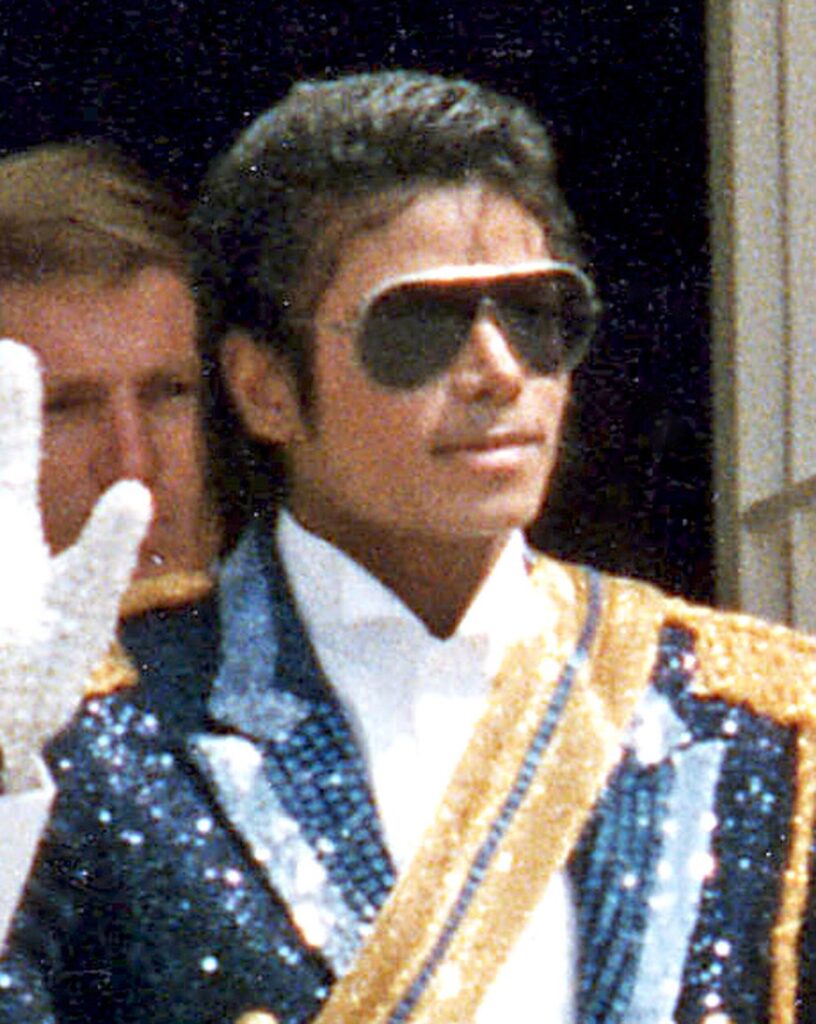
By: Sydnee Walcott The 1980s was a memorable decade, filled with fun entertainment, talent, and laughter. The voluminous hair, eccentric makeup, vibrant hats, and colourful clothing, made the 80s unforgettable. This generation embodied pop culture that offered some of the most iconic movies like E.T., to groundbreaking television shows like The Cosby Show. The 80s is also known for being one of the best decades for music and entertainment with countless chart-topping hits. Some of these classic hits were sung by famous artists like Cyndi Lauper, Bruce Springsteen, Madonna, Lionel Richie, Prince, Whitney Houston and Michael Jackson. In 1981, the introduction to cinematic music videos increased in popularity. The popularity of music videos led to the launch of Music Television known as MTV. Many were fascinated that a song had the potential to tell a story that translated to a movie-like experience. They could visually see the lyrics being enacted on the front screen which allowed them to feel closer to some of the most influential Black artists today. Music videos transformed the music scene into one that was accepting of different styles, genres, and collaborations. MTV was one of the first music channels to air on television with a focus on music videos and other music-related content from top artists in the industry. In MTV’s earlier years, there were issues centered around diversity when it came to including artists of colour in relation to the videos the channel would air. Black artists were essentially receiving minimal air time and recognition for their talent on the channel. Popular Black artists such as Michael Jackson known as “The King of Pop” was not receiving enough air time for his performative music videos. Viewers and artists began to notice this disparity and were not afraid to hold MTV accountable for the lack of inclusivity. “We’re being sat at the back of the bus television-style,” said Rick James, who experienced a shut down of his music videos on MTV for his songs “Give It to Me Baby” and “Super Freak.” David Bowie defended James and called MTV out on their lack of diversity during an interview with the channel. “I’m floored by the fact that there are so few Black artists featured on [MTV]. Why is that?” said Bowie. MTV executives denied allegations centered around racism existing on the platform and expressed it was not the reason why Black artists received little airplay. The channel stated that their music did not fit the channel’s rock-based genre. During this period, J.J Jackson was also included as a main African American on their roster of video jockeys. Michael Jackson’s “Billie Jean” became one of the first music videos introduced by a Black male artist. He broke down the barriers to achieve success in artistic performance among musicians. Although his song gained success, his journey to reach fame included many difficult challenges. CBS Record President Walter Yetnikoff reportedly threatened to pull his rock artists from MTV if they did not play the music video for “Billie Jean.” It has been stated that if the channel did not air the music video, it would have faced financial issues that would have led to the channel being defunct. Once MTV began to air more music videos from other Black artists and diverse genres of music, the channel began to gain additional viewers and success. Given the rise to fame, Black artists have contributed whole heartedly and immensely to the music industry. However, there are times where their talent is overlooked. With influential platforms like YouTube, their ancient music videos remind us of their dedication to reach success in the music industry. Outlined are a list of some of the most iconic songs among Black artists in the 1980s: Thriller – Michael Jackson Starting off his career as a member of The Jackson Five, Michael Jackson gained ground breaking success during the 1980s. Jackson’s 1982 album, “Thriller,” is one of the best selling albums of all time and held a position on the top charts for 37 weeks. The album’s seventh and final single, “Thriller,” was an iconic song accompanied with an artistic music video which set the precedent in how quality music videos are made filled with culture, design, and cinematography. The inspiration behind the music video’s theme was from the horror-comedy film American Wolf in London. The film’s Director, John Landis, also directed and helped Jackson brainstorm the design, cinematics, and dancing sequences for the song’s music video. “I wanted to be a pioneer in this relatively new medium and make the best short music movies we could make,” said Jackson when talking about his hit single in the 1988 memoir Moonwalk. Almost 40 years after its release, the “Thriller” music video still secures its popularity on the charts with people continuing to perform the choreography annually around Halloween time. The Message – Grandmaster Flash and The Furious Five The roots of hip-hop can be traced back to the late 70s at block parties located in The Bronx, New York where DJs would create their own twist on soul and funk records. The genre would take off in 1979 after the release of “Rapper’s Delight” by The Sugarhill Gang. In 1982, the genre would take a different route with the release of “The Message” by Grandmaster Flash and The Furious Five. At the time, most hip-hop songs were recognized as party songs. However, “The Message” would soon become one of the first hip-hop songs to feature lyrics with social commentary. The lyrics of the song address issues of poverty, systemic racism, crime, and the struggles people face in the inner city. Affluent people claim that they are from “the hood” however, songs like “The Message” remind listeners that inner city areas should not be glamourized. The song reminds listeners that the inner city areas continuously go through struggle. When Doves Cry – Prince Prince was a talented artist who could sing and play the keyboards, drums, and bass. Besides reaching the top charts, he was also
Relatable Issues School Daze Touches On

By: Sydnee Walcott Films provide an escape from reality among its viewers. Films exemplify life issues and include topics that everyone can relate to whether that is relationships, family, work, trauma, and health. Spike Lee is a renowned filmmaker who uses his platform to explore thought-provoking themes throughout his films. A common plot Lee likes to explore are issues pertaining to Black people such as racism, colourism, stigmas surrounding interracial relationships, and injustices within the system. Malcolm X, Crooklynn, She’s Gotta Have It and Jungle Fever are some of the most popular Spike Lee films. School Daze is another outstanding film directed and written by Lee. Based on his experiences growing up as a student attending Morehouse College, the 1988 film touches on colourism, texturism, activism, and hazing while students navigate through their life at Mission College, a fictional-historical Black college. Featured in this film are well-known actors and actresses including: Laurence Fishbourne, Giancarlo Esposito, Tish Cambell, Samuel L. Jackson, Jasmine Guy and Lee. 35 years later, and the themes the film navigates are still relevant over social media. Outlined are some of the most prevalent issues School Daze touches on: Colourism/Texturism Often referred to as the ‘sister of racism,’ colourism is an issue since slavery and continues to be a challenge within the Black community. The majority of those who are impacted by colourism are dark-skinned Black women who often face ridicule. In comparison, women of a lighter complexion and/or racially ambiguous are often praised for their skin tone. Texturism is also another prevalent issue within the Black community. While loose curly hair types and straight hair are deemed to be “acceptable,” kinkier hair types are often ridiculed and deemed as “bad hair.” The Gamma Rays, known as a sorority tied to the Gamma Phi, and non-Gamma women argued with one another based on colourist and texturist reasons. While the majority of the Gamma Ray sorority consisted of light-skinned women with straight or loose curly hair, the non-Gamma women consisted of predominantly dark-skinned women who wore their natural hair. During an altercation in the hallway, the two sides exchange insults towards each others’ complexion and hair texture. The arguing continues in a musical number where derogatory terms such as “good hair,” “nappy hair,” “wannabe,” and “jigaboo” were used. The film showcases the negative implications associated with colourism and texturism, and how both these issues continue to overlap and pit Black people against one another. Activism Activism is a form of collective action that aims to resist social injustices targeted towards racialized communities that experience racism, sexual harassment, and arbitrary violence. Movements such as the Civil Rights Movement and Feminism Movement are examples of movements that have a shared interest to fight against oppression. Dap, the film’s protagonist, is a Morehouse student and young activist who wants to fight for equal treatment on behalf of everyone within the Black diaspora. The character is introduced when his boycott of apartheid in South Africa is interrupted. His main goal is to mobilize students and faculty to participate in a movement against the Apartheid. Although most students are reluctant to participate due to being expelled, Dap manages to mobilize support and stand up for their freedom. Just like every collective action movement, there are struggles and challenges that occur along the way. However, once people recognize the end-goal, it can help others realize what cause people are fighting for. Hazing Sororities and fraternities are supposed to bring people together and provide a sense of belonging for students as they navigate their journey through post-secondary school. Joining a sorority or a fraternity can sometimes come with downsides. Some pledges are forced to go through hazing rituals that can be humiliating or dangerous. There have been many hazing incidents that have led to serious injuries or death. Half-Pint, who is illustrated as Dap’s cousin, wants to join the Gamma Phi Gamma fraternity. He objects to his cousin’s views who believes those who join one are sellouts. Half-Pint and the other pledges are forced to fish out rotting bananas from a toilet with their hands, to imitate dogs. Half-Pint was also challenged to sleep with the leader’s girlfriend. Fraternities and sororities can have many positive outcomes. However, joining one should not put one’s health, reputation, or life at risk. The movie may have aired 35 years ago, but the issues the film addresses are still relevant in today’s society. People continue to be exploited for making colourist and/or texturist comments. Injustices are still rampant and pledges at post-secondary schools are still being subjected to hazing rituals. However, the film’s message is still powerful and shows viewers that there is hope to break free from conforming to damaging school traditions.
The Divestment Movement
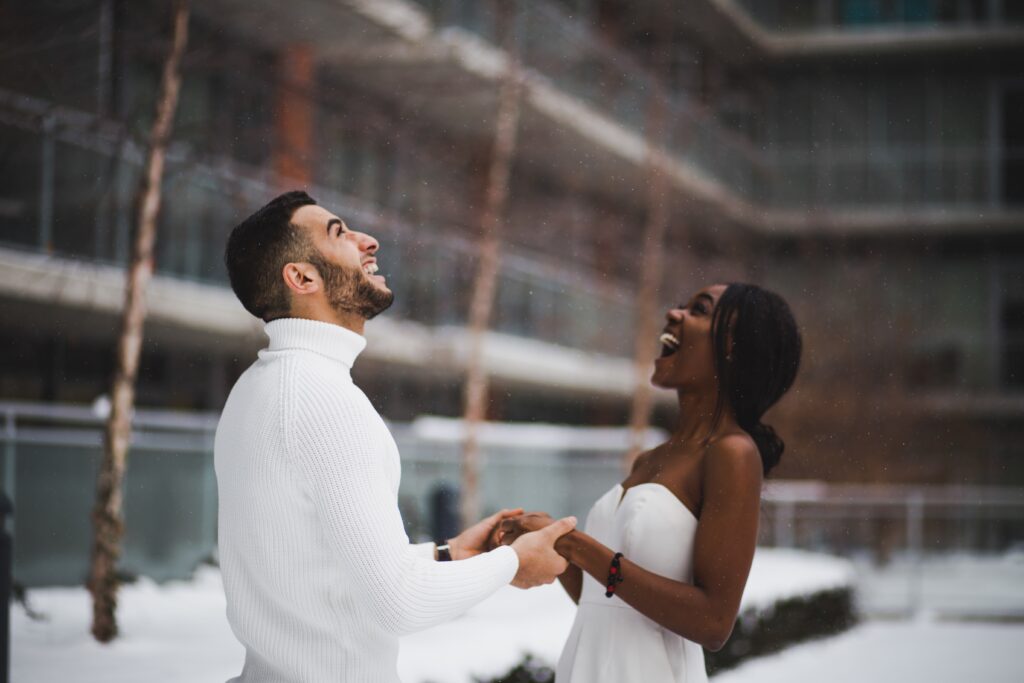
By: Sydnee Walcott Everyone deserves to be accepted in society. Unfortunately, women feel unloved and ostracized from society. In an aim to address this, women have taken a stand to address this issue of inequality. “The most disrespected person in America is the Black woman,” said Civil Rights Leader Malcolm X. On May 22, 1962, these words were announced when X was speaking to a crowd of Black women in Los Angeles, California. Sadly, over 60 years and these words are still spoken. Given efforts to reform policies, enforce greater justice in the court system, and uphold legislation, racism still remains a rampant issue. This issue has caused suffering on behalf of the Black community and many feel targeted when living a fair lifestyle. Historically, Black women have been subjected to disrespect, silenced dialogue, and limited protection to their safety. During the Civil Rights Movement, Feminist Movement, Black Lives Matter Movement and the MeToo Movement, Black women have been excluded, overlooked, and receive little to no advocacy for the work they have done. There have also been instances where Black girls and women have also struggled to receive the appropriate justice they deserve. For example, in the 1990s, it took many years before singer R. Kelly was tried in court and convicted of sexual abuse towards Black girls. For years, sexual abuse allegations go unresolved which places Black girls at a disadvantage when obtaining equal protection in the criminal justice system. Another issue Black girls and women are confronted with is facing negative comments towards their body. Many news stories have revealed that Black girls are being suspended or ridiculed by teachers for wearing their natural hair in an Afro or in a protective style, known as a low manipulated hairstyle such as braids and dreadlocks, which have been part of Black traditions for centuries. Black women have also been victims of unemployment and layoffs for wearing these styles and embracing their cultural roots and traditions at work. Celebrity children like Blue Ivy Carter face texturism from adults, a term used to explain discrimination against one’s hair type. Adults have repetitively criticized Carter’s hair since she was a baby. The negative implications of these comments place Carter at a disadvantage from embracing her natural hair as she will reflect on these harsh judgements in her adulthood. Featurism is also another issue Black women have endured. Black women have dealt with insulting comments about their nose, lips, and the overall shape of their face. For example, in January of 2020, a Twitter user compared Teyona Tayler and Ari Lennox’s face to the features of a Rottweiler. Both Taylor and Lennox expressed their concern over Twitter with respect to these emotionally abusive comments. Lennox also asked why people are so comfortable with damaging Black women and their reputation. Colourism is one of the biggest issues Black women have faced. This is an issue that dates back to the enslavement of Black people. Those who had a lighter complexion would be given domestic tasks while those of a darker complexion were given intensive, laborious, and gruelling tasks. Although slavery has ended, colourism still remains an issue with Black women being on the receiving end of it through different mediums including songs, television shows, movies, Tweets, Youtube videos, and as of recently, TikTok’s. A large majority of these colourist, featurist, and texturist comments have come from other Black men who resemble the same features. A commonality among these Black men is that they will degrade Black women through discriminatory comments while praising women who have a light-skinned, racially ambiguous, Hispanic, Asian, or White skin tone. Not only do these men make distasteful comments about Black women’s facial features, but they also stereotype them as “loud” and “ghetto.” It is acceptable to have a preference, however, it is not acceptable for people to disrespect their own or another group of people while stating what they prefer. The amount of disrespect aimed at Black women has prevented them from exploring their options in society and seeking avenues that appreciate the uniqueness they have to offer. Many want to be celebrated and not just tolerated, however, society has created this vicious cycle where Black culture is negatively scrutinized. In response to the anti-Blackness Black women face, many were able to find appreciation for their unique traits elsewhere. This movement is called the Divestment Movement. This movement recognizes and encourages Black women to date and marry men outside of their race who will accept them for their colour and tradition. Many Black women who engage in an interracial relationship have expressed that they feel included, loved, and protected by a man who rightfully chooses to disregard hurtful stereotypes. Unfortunately, the movement has faced backlash from Black men who do not want to be with a Black woman, but do not want to see them with a man of another race. Black men need to understand that their negative comments have set Black women on a quest to find love where it is appreciated. Their abusive and negative comments aimed to control Black women have done the opposite and encourage them to embrace their identity and seek romantic opportunities elsewhere. This is not to say that every Black man feels this way. It reiterates that although loving couples do exist, no one should feel envious or betrayed when Black women choose to date and marry outside of their culture.
Five Destructive Moments From America’s Next Top Model

By: Sydnee Walcott An American reality television show that was meant to provide models with an opportunity to showcase their beauty, turned out to be a destructive experience for their career. In 2003, supermodel Tyra Banks created America’s Next Top Model. The show made its debut on the now-defunct United Paramount Network. After successfully premiering six cycles on the UPN, the show decided to air 16 more on The CW before it was officially cancelled in 2015. ANTM would then be renewed and aired by VH1 before its final end in 2018. Banks created ANTM to break barriers and provide aspiring racialized models with the opportunity to gain practical experience in the modeling industry. In each cycle, 12 to 14 contestants competed in photoshoots to showcase their excellence as a model. To prove that the models had potential, the contestants would partake in a series of runway, fashion, and posing challenges. They were also required to participate in mock interviews and attend photoshoots. In just a matter of weeks, the most superior model would make it to the final cut. The last model standing would be declared as the winner of that cycle. The winner would rightfully earn opportunities to advance in their modeling career. These opportunities would include a contract with a top modeling agency, a beauty or fashion campaign, and a feature in a magazine. Out of the 24 contestants competing for the best advancements in their career 22 women won and two men won. The success of ANTM has inspired other countries such as Canada, Britain, and Germany to create spin-offs of the show with their own cultural twist and theme with respect to fashion. Banks also took steps to elevate the show by introducing a petite cycle, all-star cycle, British invasion cycle, college edition cycle, and a co-ed cycle. The contestants that did not win gained enough media presence to start a successful career with modeling and took further steps to sign acting contracts. However, some winners struggled to advance in the modeling industries due to their portrayal on television. Achieving opportunities outside of the show were not the only struggles tied to the show. The show included comical moments within the first eight cycles that were labeled as the golden age of ANTM. There have also been a lot of memorable contestants on the show. However, during the time of the show, viewers would notice discrimination among contestants. For 24 cycles, a discriminatory moment would occur on almost every cycle. These moments include racism, transphobia, body image, sexual harassment, sexual assault, and unnecessary derogatory behaviour. Over the years, contestants and winners such as Adrianne Curry-Rhode, Angelea Preston, and Lisa D’Amato have expressed their negative experience during the show. Many recently realized how destructive the show was during the COVID-19 pandemic. When quarantine was in effect, many people relied on television as a source of entertainment to combat isolation from friends and family. Re-watching these shows had viewers questioning whether Banks was a villain all along, as many reflected on how the show perpetuated a toxic environment for contestants. Many Gen-Z viewers expressed their views on TikTok, Twitter, and YouTube to expose Banks and shed light on the grave disparities in the modeling world. During this time, social media star and music artist Oliver Twixt would record live streams with former contestants and judges who discussed their time on the show. Now deleted, Banks apologized to her viewers on Twitter and has addressed the issues on an episode of The Tamron Hall Show. Given her apology years later, her message does not revoke the damage that has been instilled in the minds of the viewers. When a celebrity chooses to portray negative images over television they influence recent generations to adopt prejudiced behaviour. Outlined below are some of the most destructive moments to appear on the show: Blackface On cycle four of ANTM, the top 11 contestants modeled for a Got Milk photoshoot advertisement where they would be posing with a child. This may seem like a normal photoshoot, but the models uncovered that there would be a twist when they got on set. Creative Director Jay Manuel informed the contestants that they would have to dress up as a different race. This involved models to appear in blackface. This is not the only time blackface would be seen on the show. On cycle 13, referred to as the petite cycle, the top five contestants had their skin darkened to portray biracial women at a photoshoot. This pattern recurred on cycle 17, referred to as the all-star cycle when some of the final 10 contestants appeared in blackface at a Michael Jackson tribute photoshoot. Problems with Blackness After many fans sent clips of Amara La Negra being criticized for embracing her natural hair and Black pride on VH1’s Love and Hip Hop: Miami, Yaya DaCosta, cycle three’s runner up, decided to speak about the discrimination she faced on ANTM. During a panel, the final seven contestants were required to participate in a challenge where they had to select a hat to reflect their personal style. DaCosta is a model and actress who proudly embraces her African heritage. The judges expected her to choose the kenti-designed kufi cap and questioned why she chose the cowboy hat. When she revealed why she opted for the cowboy hat, the judges ridiculed DaCosta. “It looks like you’re about to ride a giraffe,” said judge Nolé Martin. “You have this intensity to prove your Blackness, and I think sometimes it’s overbearing,” said guest judge Rebecca Weinberg. “This [photo] is amazing, but what’s not amazing is your appearance. Think a little glamour as opposed to natural,” said Banks. DaCosta was subjected to negative criticism among judges at the panel. She was also forced to apologize to the judges for criticizing the kufi cap. La Negra’s situation reminded DaCosta that society has not improved. She also spoke about the process to heal from the trauma she endured during her time on ANTM.
Lessons We Can Learn From A Different World

By: Sydnee Walcott A Different World was created as a spin-off of The Cosby Show. The show is centered around Dr. Huxtable’s second oldest child, Denise Huxtable, played by biracial actress Lisa Bonet in the show. Bonet navigates through the complexities of college life at Hillman College, the college her parents formerly attended. The show aired for a consecutive six seasons on the National Broadcasting Company from 1987 to 1993. After season one ended, and Bonet left, the show shifted its focus on two new characters. These characters were Jasmine Guy and Kadeem Hardison, played by Whitley Gilbert and Dwayne Wayne. Debbie Allen, a Golden Globe Black actress, director, and chief creative force, aimed to create episodes that would focus on realistic issues the audience could relate to. A Different World addressed a variety of different topics such as racism, police brutality, domestic violence, and the HIV/AIDS pandemic. 30 years after ending, the show is still relevant, due to its impact on portraying disparities in a realistic lens that the Black community can confine in and relate to. Outlined are four powerful episodes that address prevalent issues: “Ms. Understanding” (Season 4, Episode 17) Shazza Zulu’s self-publishing book provokes interracial tensions with regards to the shortcomings of Black men, leaving the college divided by gender. When the dean arranges a summit as an opportunity for both sides to dispute their issues freely, Shazza singles out Kim and accuses her of being with a White man. She is dating Matthew, who is Freddie’s White cousin. Kim is distraught by these judgements and leaves the summit after confronting Shazza. Shazza was not the only Black male student who felt this way. Ron had also expressed feelings of betrayal towards Kim’s relationship. However, he took the responsibility to apologize to Kim and admitted to being jealous. The relationship between Kim and Matthew was controversial both on and off screen due to the couple being interracial. The jealousy surrounding their relationship has led viewers to glamourize White men as suitable partners in a romantic relationship. Debbie Allen received negative fan mail from Black men who strongly felt that Kim should be dating a “brother,” someone of similar Black race. This episode highlights the scrutiny Black women face when dating and marrying outside of their race. An interracial couple might be viewed as different, but the love and emotional connection they share should be a main focus. “If I Should Die Before I Wake” (Season 4, Episode 23) Whitley decides to give up her virginity to her boyfriend Dwayne. During a speech assignment, Josie, guest-star Tisha Campbell, reveals that he contracted AIDS after having unprotected sex with a boyfriend. Josie’s diagnosis with AIDS garners mixed reactions from her classmates. This news deters Whitley from having sex because she does not feel ready. Ron is worried that he contracted the virus due to his past sexual history and decides to get tested. Gina and Terrence fear interacting with Josie due to their own ignorance. They realize the root of their ignorance as Kim and Mr. Gaines educates them on how HIV/AIDS is spread. A Different World was one of the first shows to address the HIV/AIDS pandemic and the preconceived notions people had surrounding the virus during this time. Not only does this episode teach people a lesson about ignorance, but it also reminds people the importance of using protection when having sex. “Love Taps” (Season 5, Episode 22) Gina’s boyfriend, known as “I’m Down,” prepares to perform a rap concert for his classmates. In this episode, viewers uncover that Dion has been physically abusing Gina. Freddie witnessed Dion beat Gina outside, however she was unsure if it was legitimate because it was dark outside. As the episode runs, it was confirmed Dion and Gina were the couple Freddie saw. Although Dion apologizes for abusing Gina and promising he will never abuse her again, he quickly reverts back to his old habits. Gina’s black eye provokes Lena to investigate what has been going on in their relationship, which leads to Lena defending Gina and Dion receiving backlash. Ron, who was hired as Dion’s promoter, quits and attempts to fight Dion to stand up for Gina. Dwayne advises Dion to seek counselling and suggests he will provide moral support. Whitley provides emotional support to Gina and reiterates her worth by suggesting that she should break up with Dion. Mr. Gaines’ insight allows Gina to see the light and end her relationship with Dion, safely. Gina presses charges after Terrence called the police on Dion. This episode reveals the negative implications of a toxic relationship. Breaking free from an abusive relationship that causes psychological trauma is not an easy thing to do, but with the right support it should be done safely to avoid continuous pain. “To Whit, With Love” (Season 6, Episode 14) Although the main premise of the story focuses on Whitley taking on a substitute job for rebellious kids at an inner-city school, Lena’s relationship with Dorian was prominent. When Dorian builds the courage to ask Lena out on their first date she is shocked to hear that he is against premarital sex. This caused Lena to have second thoughts on wanting to pursue a relationship with Dorian. At the end of the episode, Lena decides to give Dorian a chance. She also expresses to him that it is nice he will respect her body and truly appreciate her. This episode sheds light on how real connections and conversations can set a strong foundation for meaningful relationships without the need to have sex. It also teaches viewers to respect someone’s boundaries when it comes to sex. As time progresses, A Different World will be a show that Black audiences can relate to. Throughout the six seasons, viewers can simultaneously enjoy comedic moments and learn about real life situations, and how to deal with them appropriately.
The Origins of Soul Food

By: Sydnee Walcott
